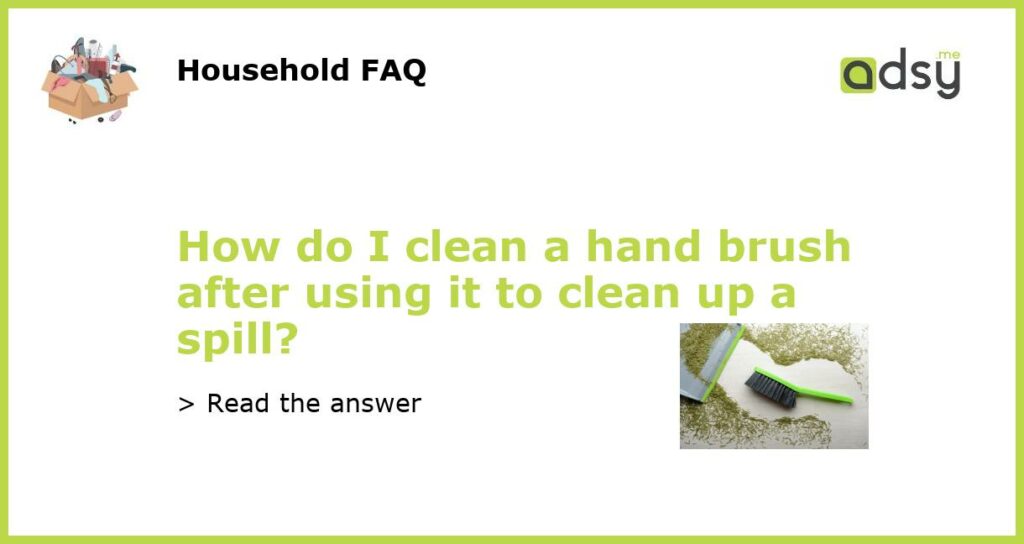Understanding why cleaning your hand brush is important
If you’ve used a hand brush to clean up a spill, you’re probably wondering how to clean the brush properly. Not cleaning your hand brush after each use can lead to the proliferation of germs and bacteria, and decrease the effectiveness of the brush over time. It’s also an important aspect of hygiene, especially if you use the brush to clean surfaces that come into contact with food or are in a high-traffic area like a bathroom.
Determine the type of bristles on your hand brush
The first step to cleaning your hand brush is to identify the type of bristles it has. If your brush has natural bristles, such as boar hair, it is essential to use a mild soap and water to prevent degradation of the bristles. Synthetic bristles, on the other hand, can withstand more heavy-duty cleaning as long as they aren’t too stiff.
Clean with soap and warm water
To clean the brush, first remove any excess dust, hair or debris by using a small comb or your fingers. Once you have removed the debris, use a mild soap and warm water to clean your brush. Mix a small amount of soap with warm water in a bowl and dip the brush in. Swish the brush around in the soapy water to get the dirt out, and rinse it thoroughly under warm water. Ensure there’s no soap left on the brush as it can attract dirt and debris.
Use white vinegar for a deeper clean
If your hand brush has tougher stains or residue, you can add white vinegar to the soap and water solution. White vinegar is a natural cleaner that can cut through grease and kill bacteria. Mix 1 part vinegar with 2 parts water and add a few drops of soap. Dip your brush into this solution and scrub gently with a brush cleaner or toothbrush. Rinse the brush out with warm water and hang it so that the bristles dry downwards.
Maintain and store your hand brush properly
To keep your hand brush in good condition, it’s important to maintain and store it properly. After cleaning, gently squeeze out any excess water and reshape the bristles. Avoid using harsh chemicals or high heat to dry your brush as this can lead to bristle damage. Store your brush in a dry area with good airflow to avoid mold or mildew growth.






